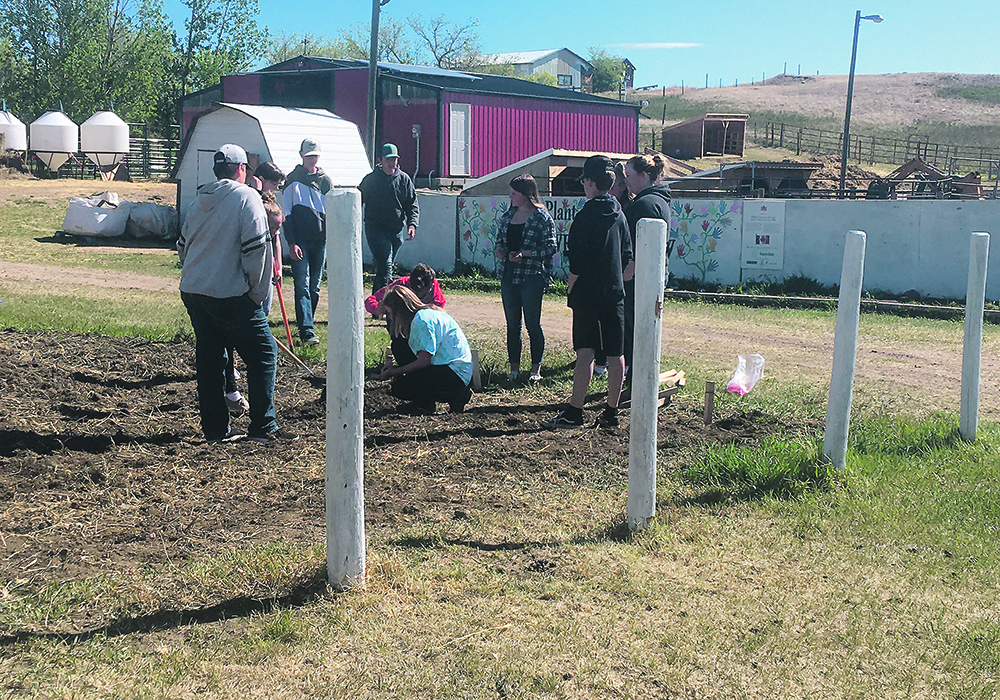An Alberta Kindergarten to Grade 12 school puts an agricultural spin on what it teaches by offering hands-on experience
Attracting the younger generation to farming helps if they can be exposed to the field at an early age.
Hands-on experience can be mind-changing for aspiring young agrarians. To that end, Altario Agriculture Academy in Altario, Alta., has been building a farm curriculum into its junior high and high school program for years.
In 2016, Altario School, catering to Kindergarten to Grade 12 students, took an agricultural focus through the Career and Technology Foundations (CTF) segment of the curriculum.
Embracing the background of the surrounding county, the school established a community garden in a disused skating rink. It expanded from there.

Kevin Van Lagen, principal of Altario School, said that in 2018 it thought of having theme days around agriculture and brought in speakers on different topics. In 2019, they added a barn to raise a steer.
“As of today, we have 30 chickens, pigs, sheep, cow-calf pairs, steers, bees, and we’ve added a hydroponic food modular,” said Van Lagen.
There are more plans, such as creating educational partnerships with local Indigenous communities to create a curriculum that highlights a Cree perspective.
“That’s a pretty special curriculum, really. We’re looking at piloting it next year in our schools,” Van Lagen said.

A typical day at the school farm involves chores carried out by elementary school students, often recruited by older schoolmates, 25 minutes before the first class of the day.
Leadership or management positions are made available to students in Grades 7 to 12. These students then engage others from the school to help on weekly rotations.
Involvement in the agriculture curriculum is voluntary, though there is a 90 percent participation rate from the school.

Van Lagen said the kids feel a sense of ownership for the school and the farm program.
“We’re showing them that… there are all kinds of opportunities in agriculture that you may not have thought of,” he said. “We let them pursue their passion and then we give them credits based on that.”
Students have a chance to sell the produce and meat from their farm in a few ways. There are subscription food boxes, a weekly school market open to the public, and the Hillcrest Lodge Seniors Home in nearby Provost, Alta., buys produce from the school. Food from the program is also used in some of the weekly hot lunches the school provides.

Part of the agricultural curriculum involves working set-out course hours, which can be worked on a family farm, or where the student chooses. If a student cannot find a place to work the hours required to earn course credit, the school has them help on the school farm.
He said success in the program has been borne out by the number of this year’s graduating students who are pursuing agriculture as a career after high school.

“One is going directly to work on a a farm, then to take some individualized courses at the college level and then three of them are going to college for different agricultural programs and one is off to university.”
Funding for the CTF program has come from several sources, including the Local Food Infrastructure Fund, Nutrients For Life and Inside Education. People from the local community have also volunteered as special advisers.

“We’re expanding our hydroponic food modular in the fall, significantly doubling it. We’re going to be working with a former student of our school to do some pretty cutting edge stuff in regards to embryo transplants… in cows,” said Van Lagen.
Other rural schools have been looking at Altario School as a model.
“Lots of schools actually reached out and we have several schools that are following our model. Many of them have toured here and gone off and done their own thing,” said Van Lagen.















